It amazes me how my kids can’t wait for summer break – and then within a week, they tell me how bored they are. As I do not want them sitting in front of the computer or TV all day, I have found that adding a few math card games to their day not only keeps them from getting bored, but also keeps their math facts fresh.
Sum Rummy is a quick, fun game and one of my family’s favorite. It is game P3 in the Math Card Games book. It is very similar to the real Rummy game, so you may also want to watch a video on how to play Rummy if you have never played it before.
To play Sum Rummy, you will need 50 to 70 cards from the Basic Number deck. Do not use the zeros. If you are playing with three or more players, use 75 to 100 cards.
Shuffle the cards well. Deal each player 7 cards. Use the remaining cards as the stock pile. Note: we’re showing each person’s cards laid out, but in a real game, nobody sees anyone else’s cards.
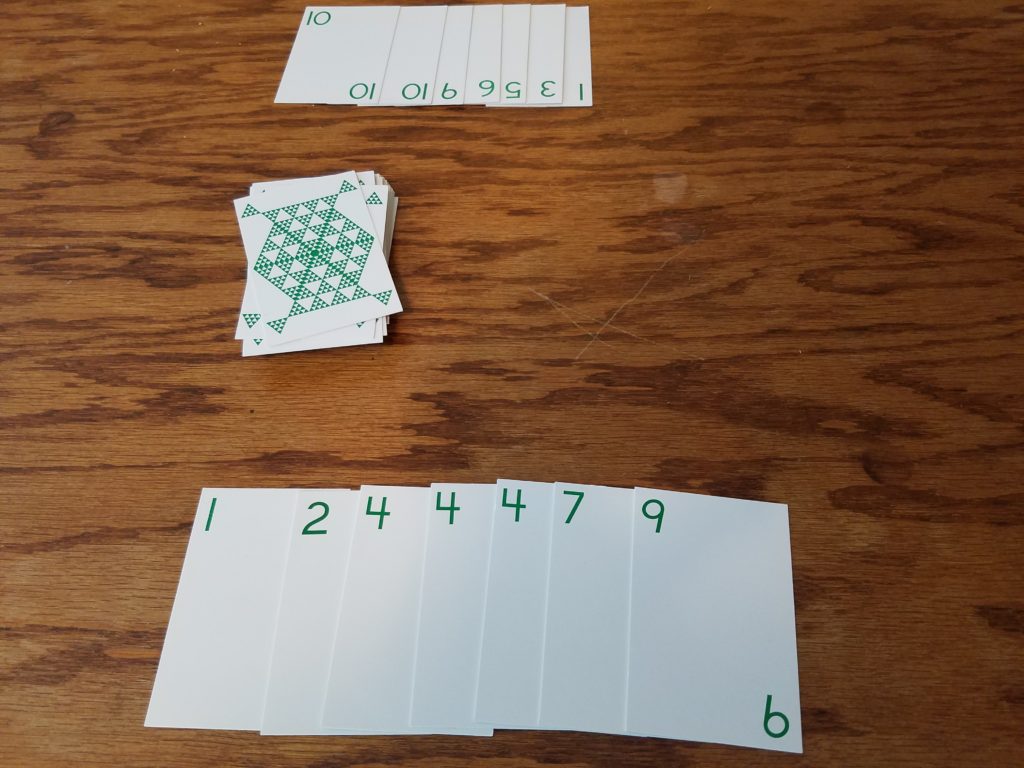
Draw the first card from the stock pile and place it face up next to the stock pile.
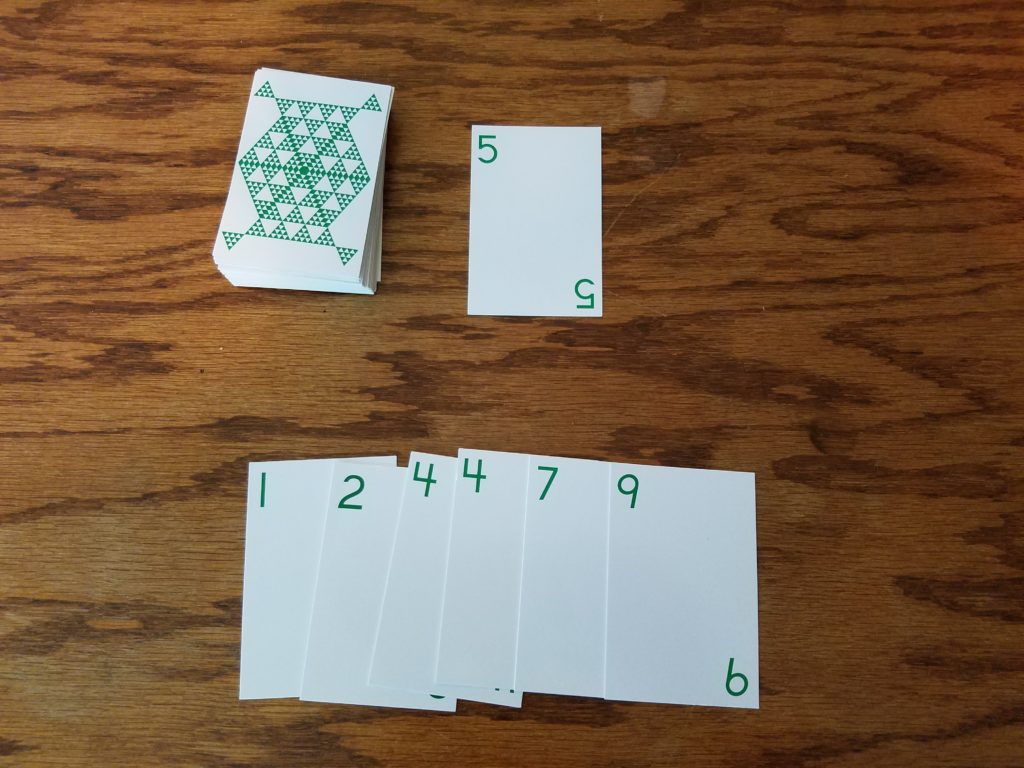
The first player can draw one card from either the stock pile or from the discard pile.
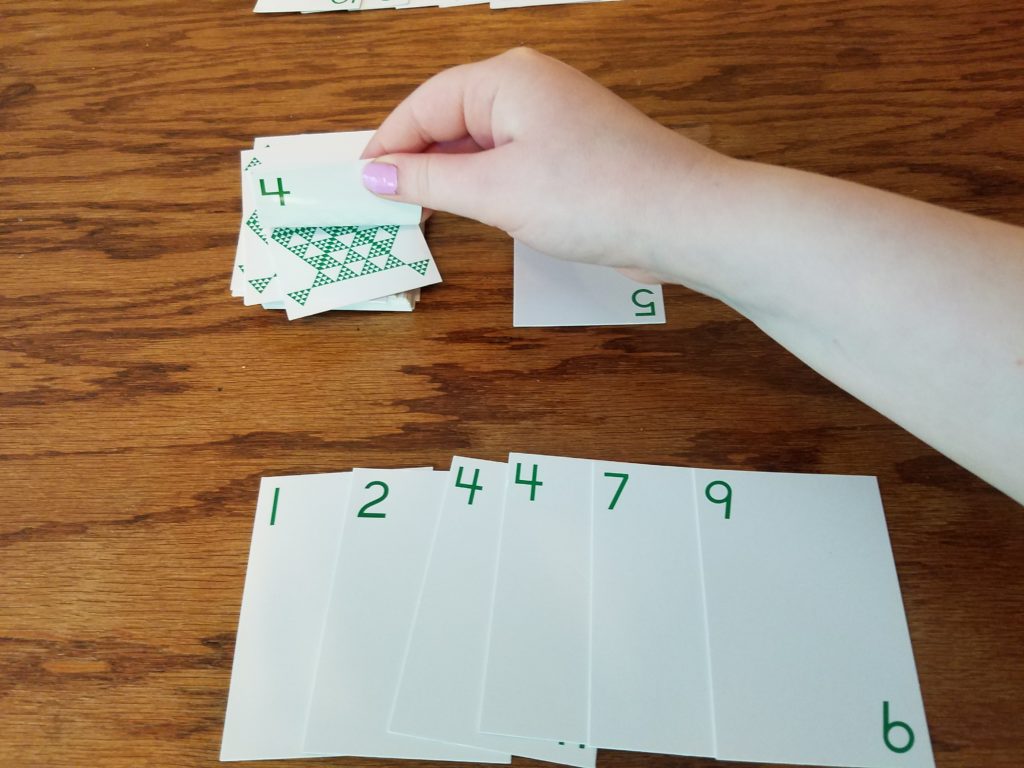
The player will check her hand to see if she has three or more identical cards. If so, she can lay them down. With the cards 1, 2, 4, 4, 4, 7, 9, she can lay down her three 4s.
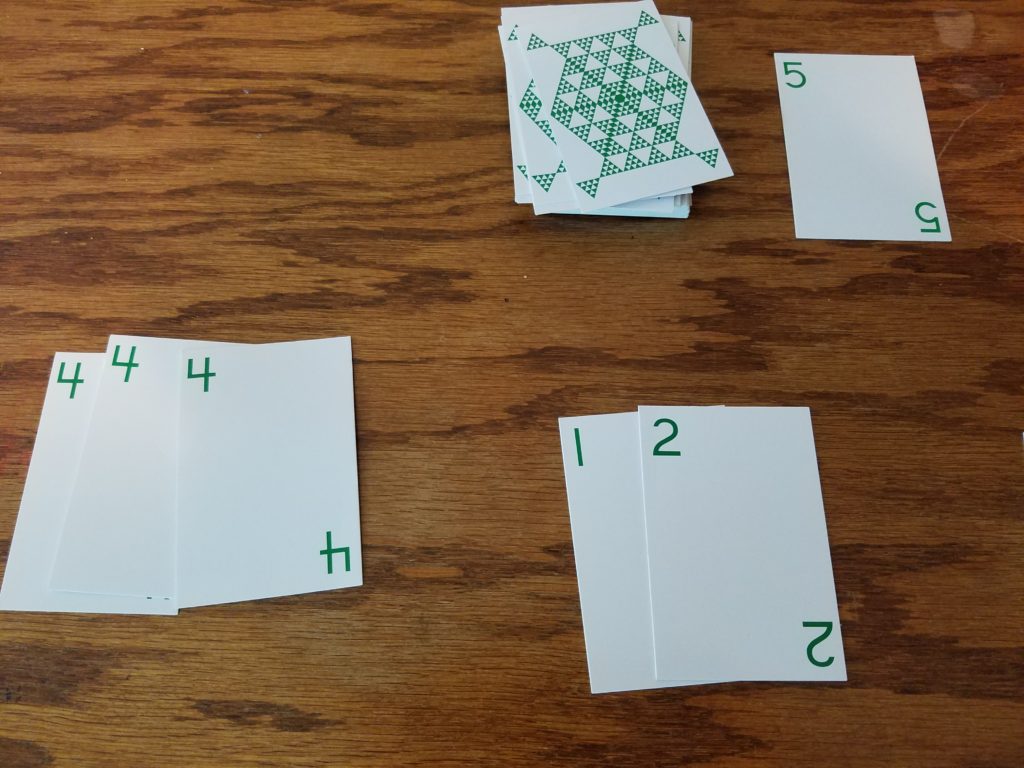
Once she has played all the cards she can, she will discard one of the cards in her hand to the discard pile. When the card is discarded, it is layered on the existing card so you can see both the previous card and the newly discarded card.
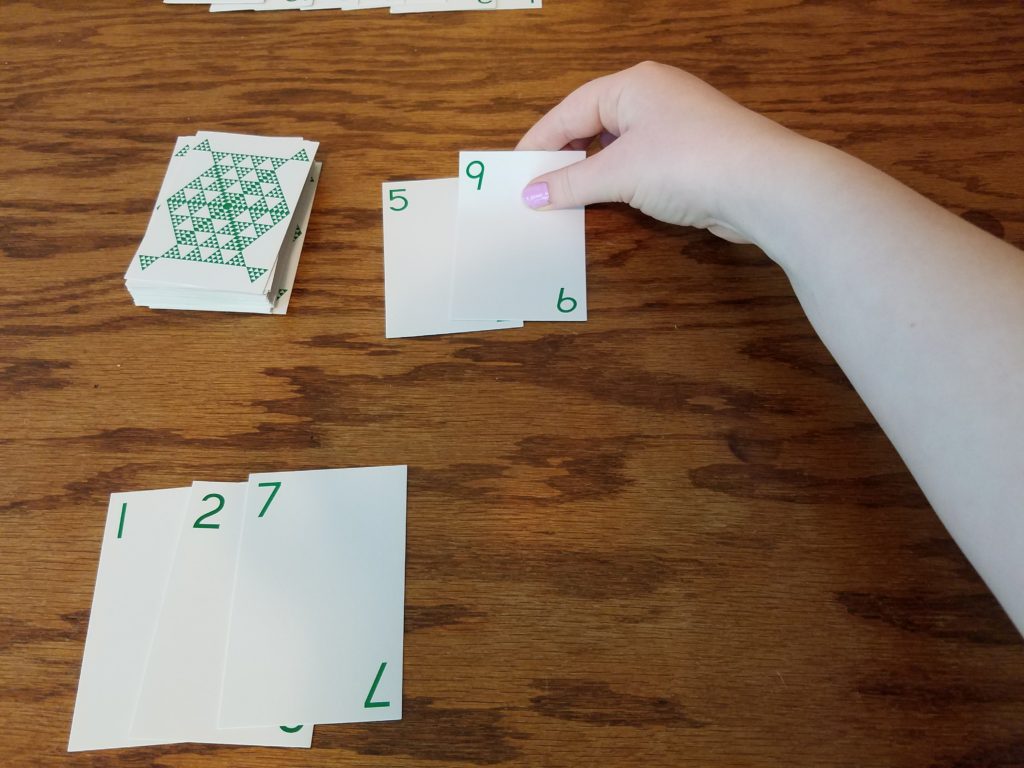
Then it is the next players turn. He can either choose to draw one card from the stock pile or he can draw from the discarded pile. He decides to draw from the stock pile.
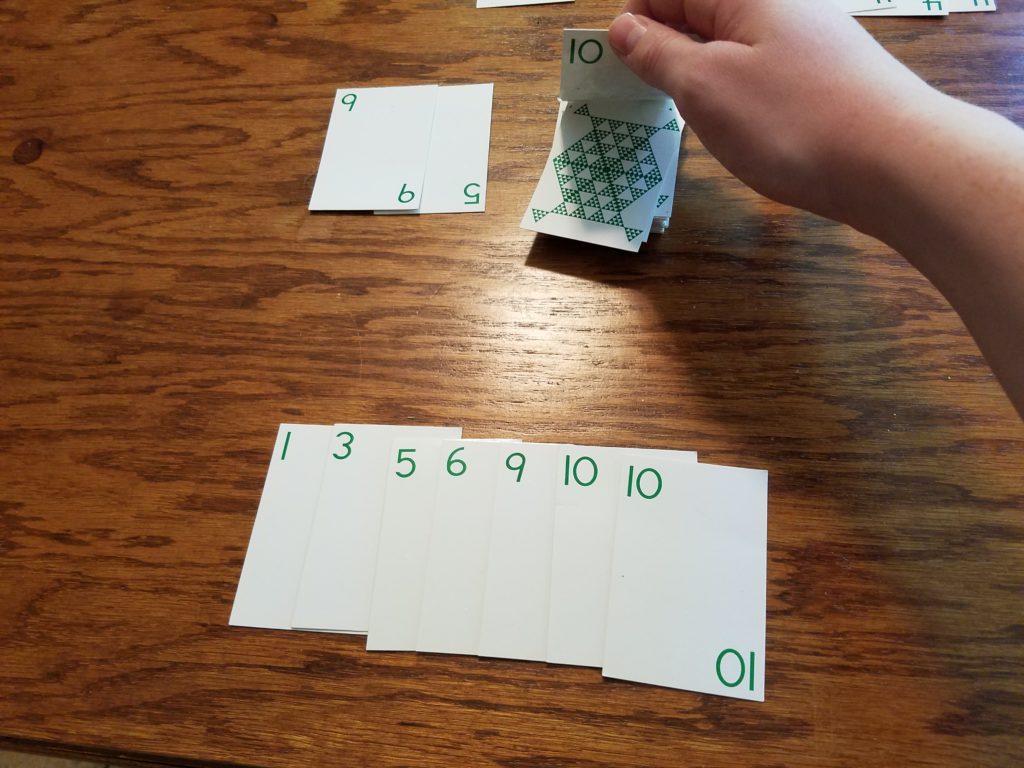
It’s a 10 card! This gives him a set of three 10 cards that he can lay down.
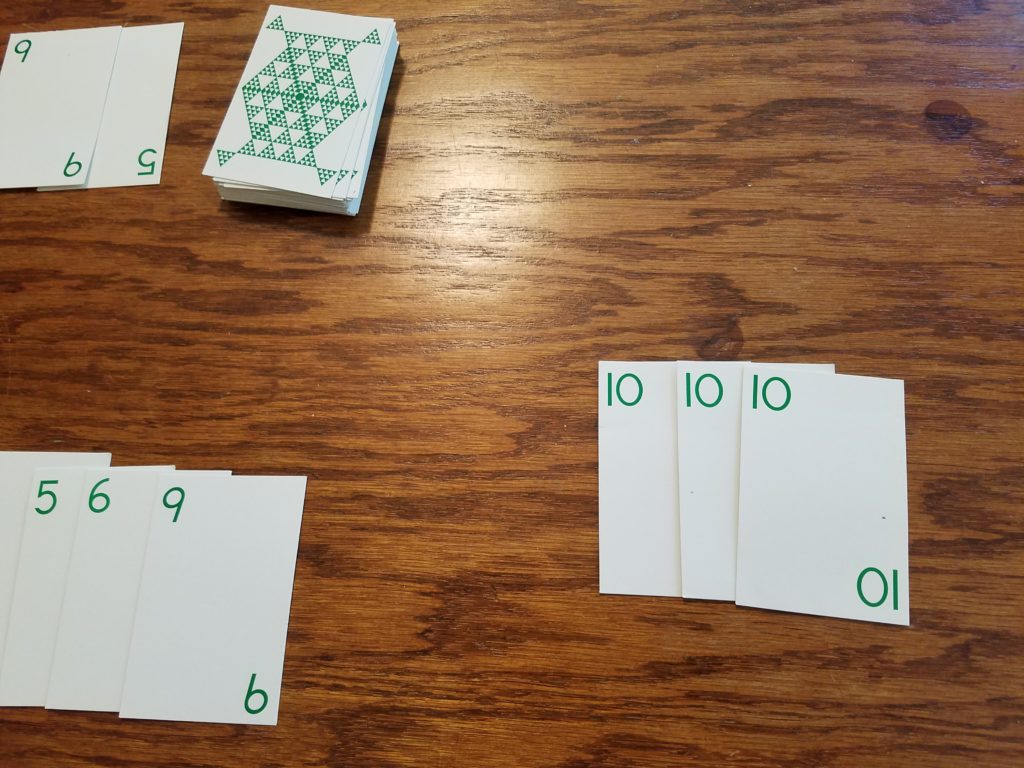
When he has played all the playable cards, he discards a card.
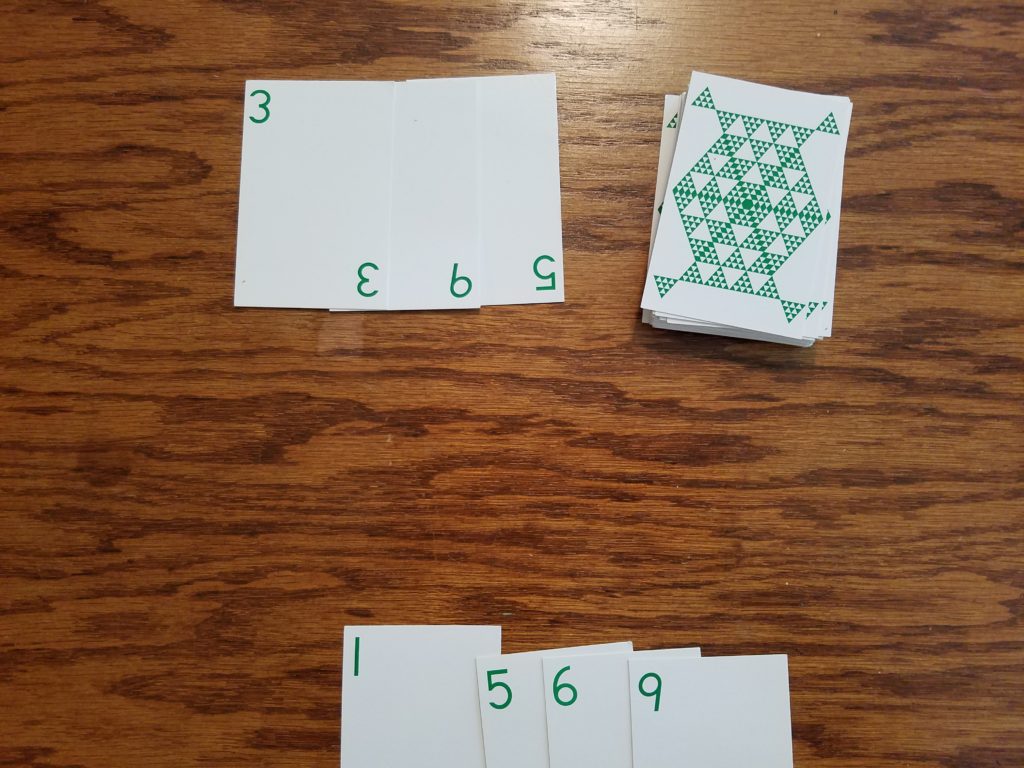
It’s the first player’s turn again. She drew from the stock. If she draws a card that she has already laid down, the three 4s, she can place the new 4 card along with the previous 4s she laid down. She does not need to find another set of three cards to play it.
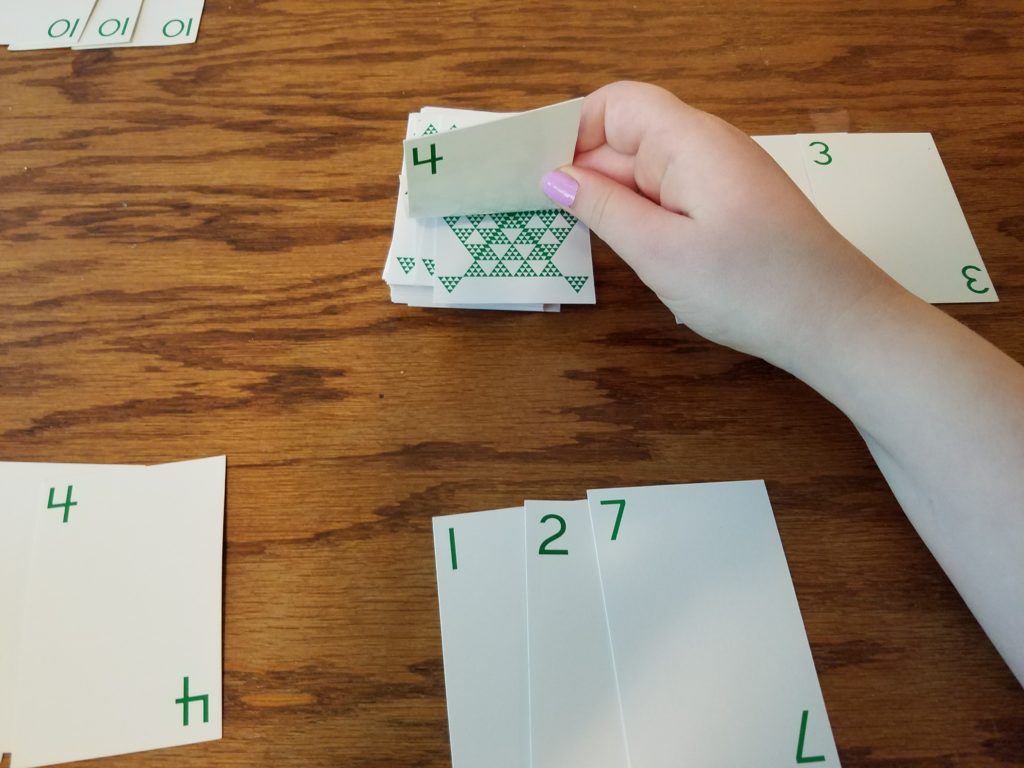
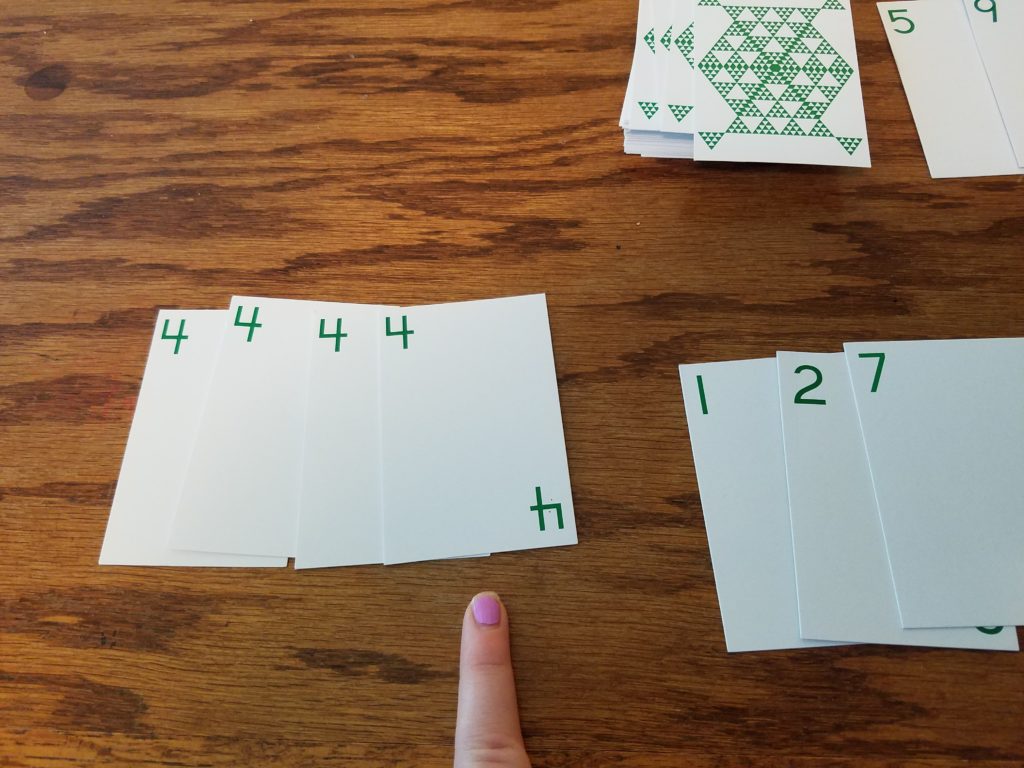
When a player chooses to pick up from the discard pile, he can pick up only the top card or as many cards as he wants – in order from the top on down – from the discard pile. In this case, the player is picking up three discard cards: 9, 3 and 1.
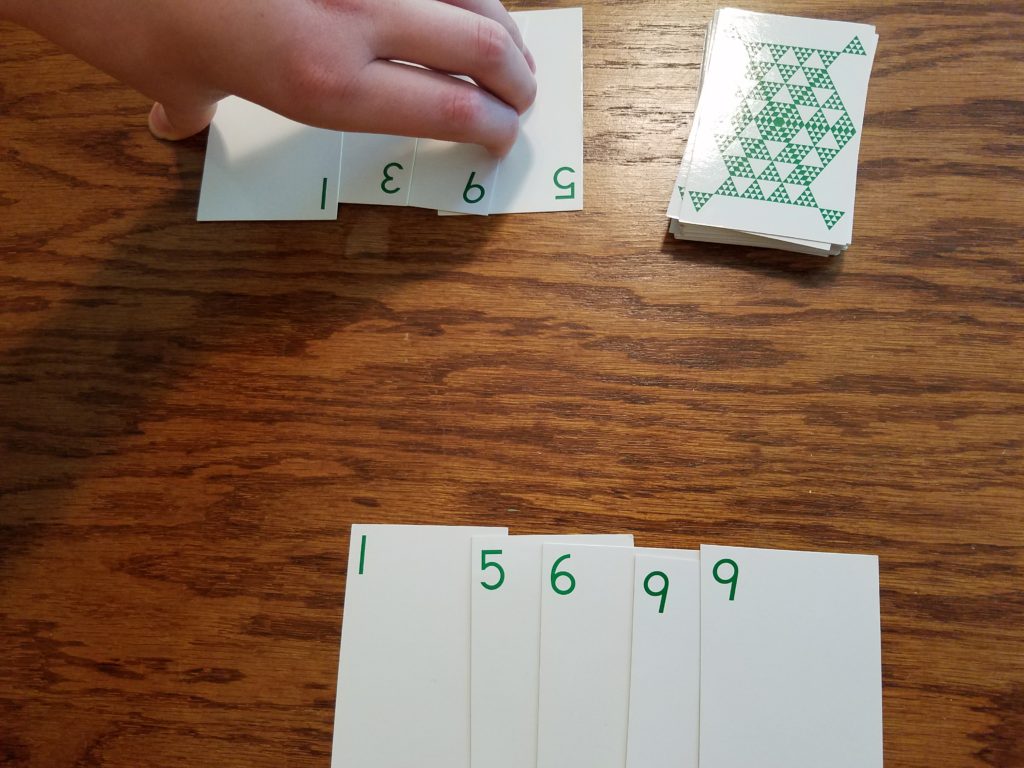
The new 9 card gives the player another set of three to lay down.
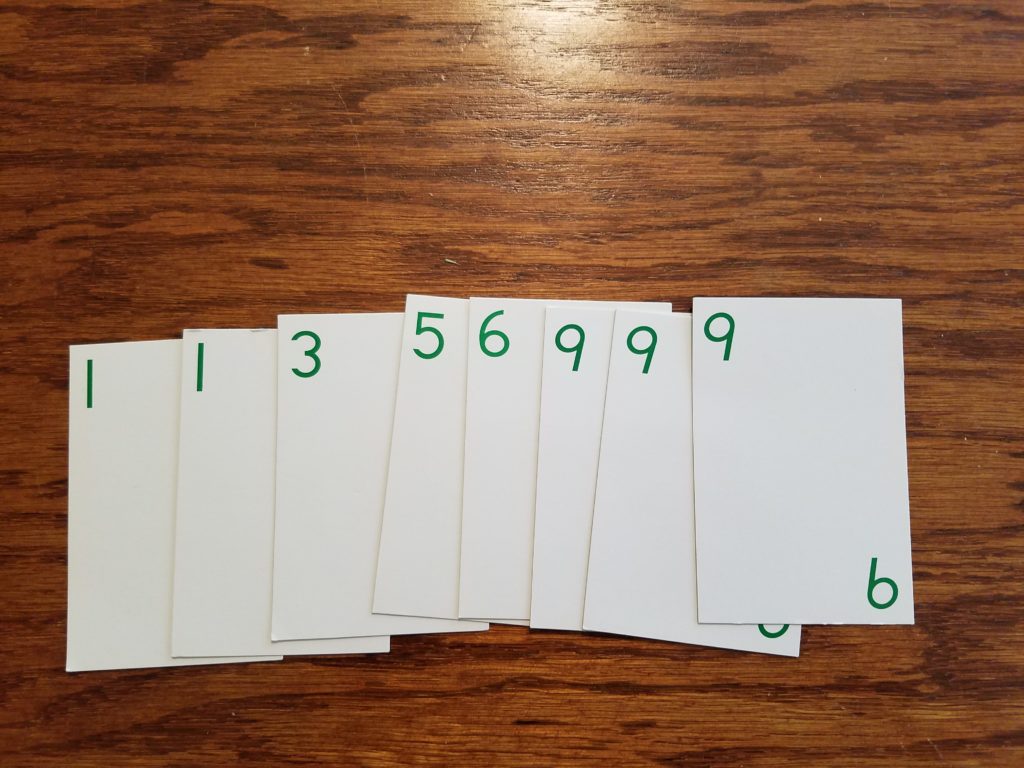
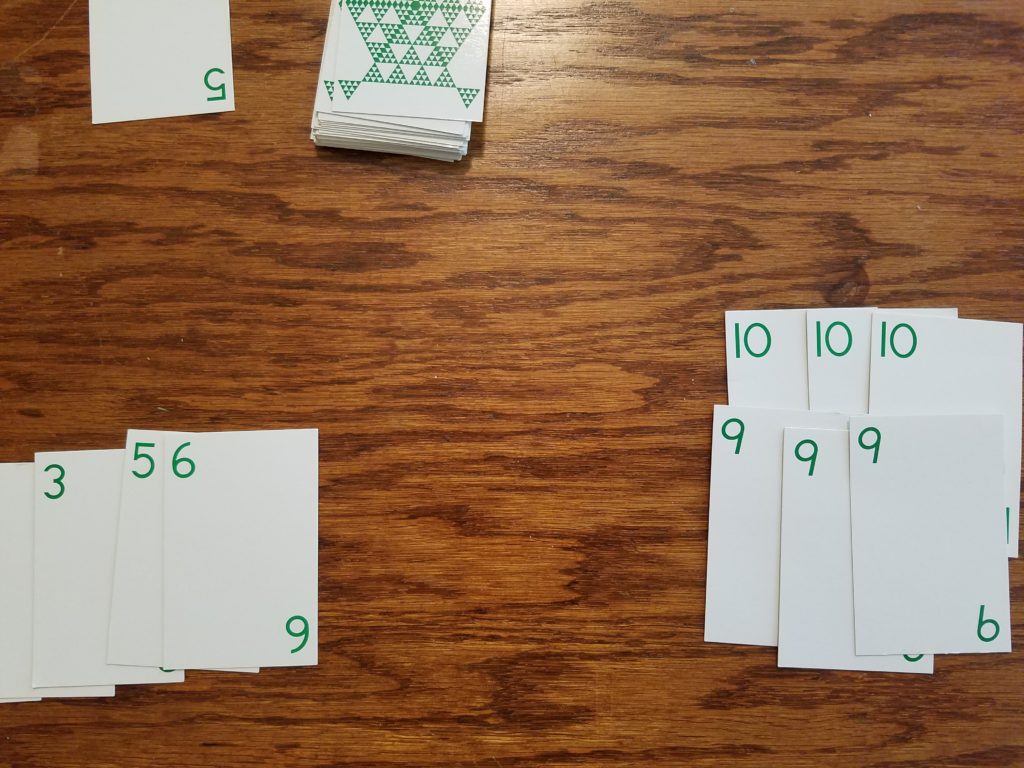
Here are some important aspects to the game.
- No player can have more than ten cards in his hand at the end of a turn. So, when picking up a string of cards from the discard pile, the player needs to be sure that he can play enough cards to have ten or less cards in his hand at the end of the play.
- If a player runs out of cards, he can draw five cards from the stock pile.
- The game is over when all the cards from the stock deck is exhausted. Then the math fun begins.
Once the game has ended, each player needs to calculate how many points they have. The number on each card is the amount of points received.
For example, if the player has made the following groups:
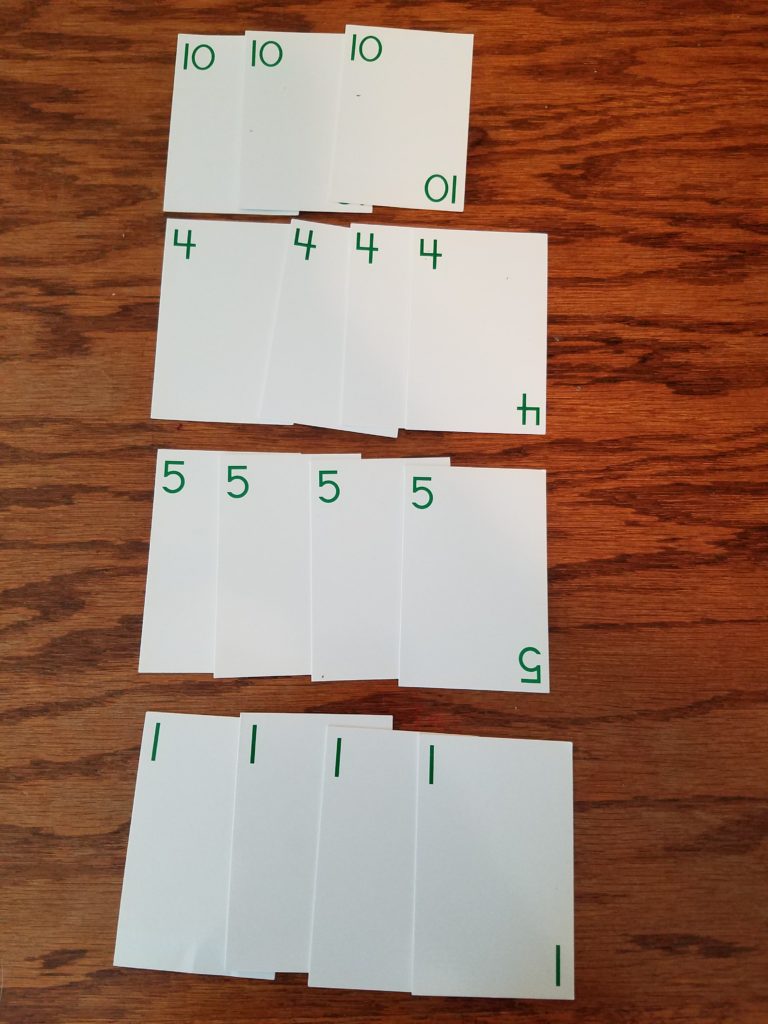
1, 1, 1, 1 (totals 4 points)
5, 5, 5, 5 (totals 20 points)
4, 4, 4, 4 (totals 16 points)
10, 10, 10 (totals 30 points)
Then the player needs to add those points together. This player will have a total of 70 points (4 + 20 + 16 + 30). Of course, if the child knows his multiplication, the calculation of these points is very easy.
I hope you enjoy playing Sum Rummy!

Very nice! Sum Rummy is a very fun game, and is pretty easy to learn and get started with.